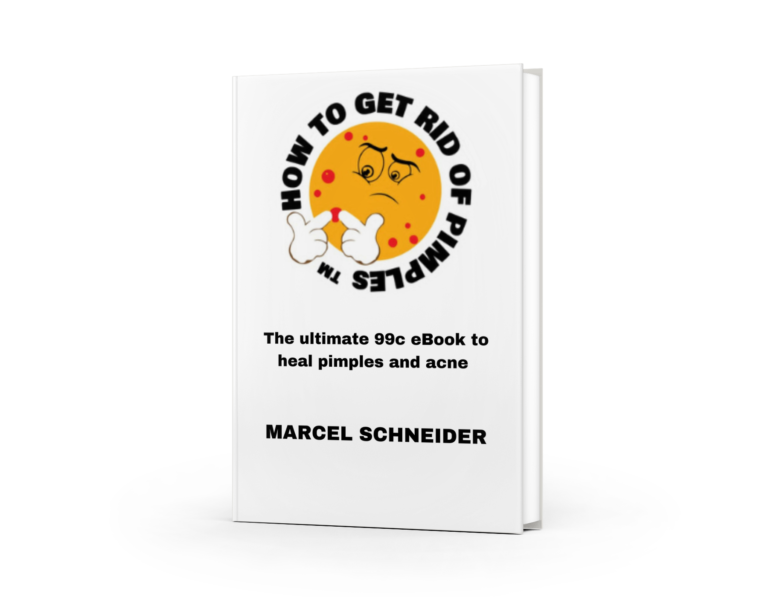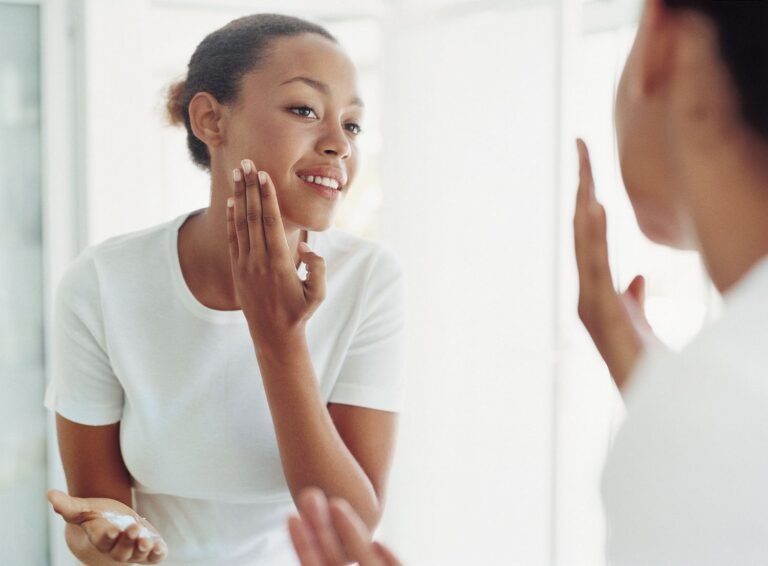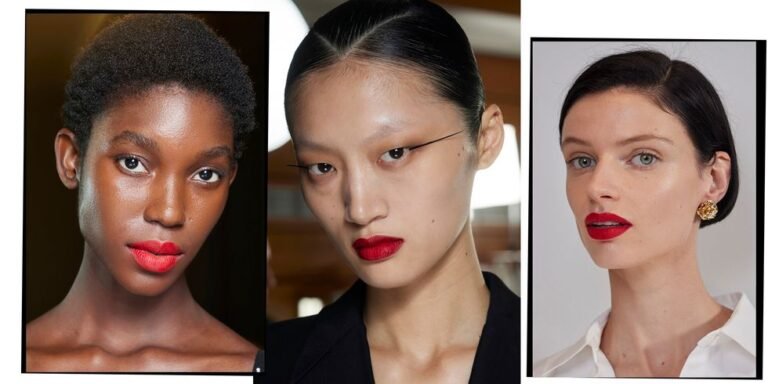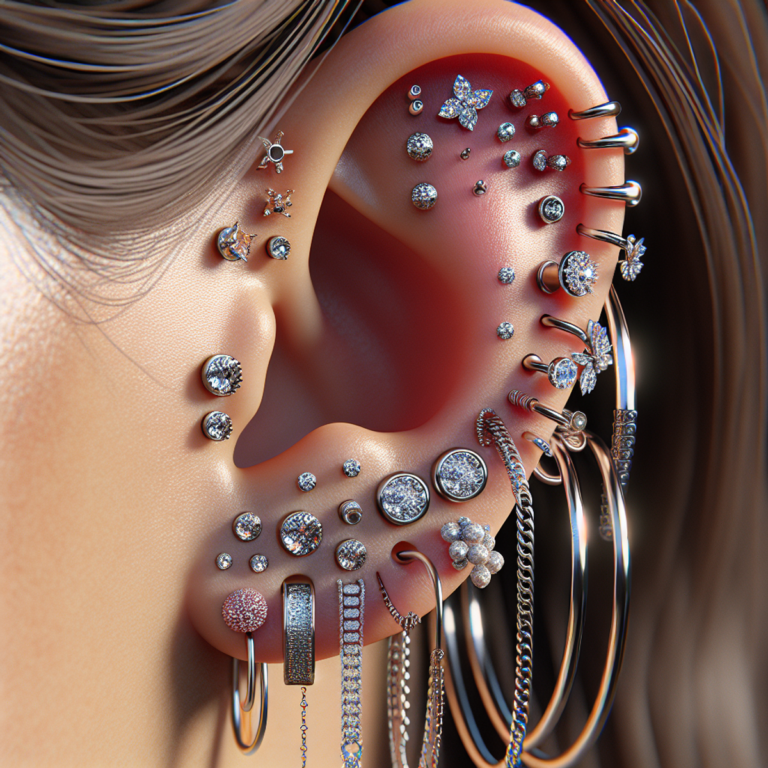How to get rid of breakouts

Introduction
Dealing with breakouts can feel like an endless battle. Whether you’re struggling with stubborn forehead bumps, persistent blackheads, or painful cystic acne, the search for clear skin often leads to frustration and decreased confidence.
Acne develops when hair follicles become clogged with oil and dead skin cells, creating the perfect environment for bacteria to thrive. This common skin condition affects people of all ages, not just teenagers, and can manifest in various forms:
- Whiteheads and blackheads: Clogged pores that appear as small bumps
- Papules and pustules: Red, inflamed spots that may contain pus
- Cystic acne: Deep, painful bumps under the skin
- Nodules: Large, painful lumps beneath the surface
The path to clear skin isn’t about finding a single miracle solution. Your skin needs a comprehensive care strategy that addresses both internal and external factors. This guide will equip you with practical knowledge to:
- Create an effective skincare routine tailored to your needs
- Identify and eliminate acne triggers
- Choose the right products for your skin type
- Implement lifestyle changes that support skin health
- Treat existing breakouts and prevent future ones
- Manage acne scars and dark spots
Remember: achieving clear skin takes time and consistency. The strategies you’ll learn here form a complete toolkit for long-term acne management, helping you build healthy habits that lead to lasting results.
Understanding Breakouts
Breakouts can occur in different ways, and each type requires its own specific treatment. Let’s take a closer look at the main types of acne and what causes them:
Types of Acne
- Whiteheads: Closed comedones that appear as small, flesh-colored bumps under the skin
- Blackheads: Open comedones with dark appearances due to oxidation
- Papules: Small, red, tender bumps
- Pustules: Red, inflamed spots with white/yellow pus-filled centers
- Cystic Acne: Deep, painful bumps filled with fluid, often leaving scars
- Nodular Acne: Large, painful bumps deep under the skin
Common Causes of Breakouts
Hormonal Factors
- Puberty-related hormonal changes
- Menstrual cycle fluctuations
- Pregnancy and postpartum changes
- Polycystic ovary syndrome (PCOS)
Lifestyle Triggers
- Poor sleep patterns
- High stress levels
- Excessive sweating without cleansing
- Touching face frequently
- Using dirty phones or pillowcases
Dietary Influences
- High-glycemic foods
- Dairy products
- Processed foods
- Chocolate and certain nuts
- Dehydration
Environmental Factors
- Humidity
- Pollution
- Heavy makeup use
- Certain medications
- Harsh skincare products
Genetic Predisposition
Your genetic makeup influences:
- Oil production levels
- Skin sensitivity
- Pore size
- Inflammatory response
Understanding these different types and causes helps create targeted treatment strategies. Breakouts often result from a combination of these factors, making it essential to identify your specific triggers for effective treatment.
Daily Skincare Routine for Managing Breakouts
A consistent skincare routine forms the foundation of clear, healthy skin. Let’s break down the essential steps to manage breakouts effectively.
1. Gentle Cleansing
Your skin needs thorough cleansing twice daily to remove:
- Excess oil
- Dead skin cells
- Bacteria
- Environmental pollutants
For Oily/Combination Skin:
- Use gel-based or foaming cleansers
- Look for ingredients like salicylic acid or tea tree oil
- Avoid harsh sulfates that strip natural oils
For Dry/Sensitive Skin:
- Choose cream-based or milk cleansers
- Select products with ceramides or glycerin
- Use lukewarm water to prevent irritation
2. Moisturizing Strategy
Many people skip moisturizer thinking it causes breakouts – this is a mistake. Proper hydration helps:
- Balance oil production
- Strengthen skin barrier
- Reduce inflammation
Best Moisturizer Options:
- Water-based gel moisturizers
- Oil-free formulations
- Products containing hyaluronic acid
- Lightweight lotions with niacinamide
3. Smart Exfoliation
Regular exfoliation removes dead skin cells that trap bacteria and cause breakouts. The key is finding the right balance:
Chemical Exfoliants:
- BHA (salicylic acid) – ideal for penetrating pores
- AHA (glycolic acid) – effective for surface-level dead skin
- Use 2-3 times weekly
Physical Exfoliants:
- Gentle microbeads
- Soft washcloths
- Silicone cleansing tools
- Limit to once weekly
Special Considerations:
- Never exfoliate active breakouts
- Start slowly with new exfoliants
- Stop if irritation occurs
- Apply extra sunscreen when using exfoliants
Pro Tip: For stubborn under-the-skin pimples or body acne (including buttocks), incorporate a benzoyl peroxide wash into your routine. Leave the product on for 2-3 minutes before rinsing.
Choosing the Right Products for Acne-Prone Skin
Selecting effective skincare products for acne-prone skin requires understanding key ingredients and product formulations. Your first step: check for “non-comedogenic” on product labels – this indicates the formula won’t clog your pores.
Essential Active Ingredients
- Salicylic Acid (BHA): A powerful exfoliant that penetrates deep into pores
- Ideal concentration: 0.5-2%
- Best for: blackheads and whiteheads
- Benzoyl Peroxide: Antibacterial agent that kills acne-causing bacteria
- Recommended strength: 2.5-5%
- Best for: inflammatory acne and cystic breakouts
- Niacinamide: Reduces inflammation and regulates oil production
- Optimal concentration: 2-5%
- Best for: all types of acne
What to Avoid
Certain ingredients can trigger breakouts or irritate sensitive, acne-prone skin:
- Heavy oils
- Artificial fragrances
- Alcohol-based products
- Sodium lauryl sulfate
- Coconut oil
- Lanolin
Product Selection Tips
- Start with lower concentrations of active ingredients
- Patch test new products on a small area for 24 hours
- Look for lightweight, water-based formulations
- Choose gel or lotion textures over thick creams
- Read ingredient lists – shorter lists often mean fewer potential irritants
Your skin might need time to adjust to new active ingredients. Introduce one product at a time, spacing new additions 2-3 weeks apart. This method helps identify which products work best for your skin and prevents potential adverse reactions from multiple new ingredients.
Remember: expensive doesn’t always mean effective. Many affordable products contain the same active ingredients as their high-end counterparts. Focus on ingredients rather than brand names when selecting your acne-fighting arsenal.
Lifestyle Factors That Can Influence Breakouts
Your daily habits play a crucial role in the health of your skin. Understanding these lifestyle factors can help you make informed decisions to reduce breakouts.
Diet and Skin Health
- High-glycemic foods like white bread, sugary snacks, and processed meals can trigger insulin spikes, leading to increased oil production
- Dairy products contain hormones that may stimulate sebum production and inflammation
- Foods to include in your diet:
- Omega-3 rich fish
- Leafy greens
- Antioxidant-rich berries
- Zinc-containing nuts and seeds
Hydration’s Role in Skin Health
Drinking 8-10 glasses of water daily helps:
- Flush out toxins
- Maintain skin elasticity
- Balance oil production
- Support natural detoxification processes
Stress Management for Clear Skin
Your body releases cortisol during stressful periods, which can increase oil production and inflammation. Try these stress-reduction techniques:
- Practice deep breathing exercises for 5-10 minutes daily
- Incorporate regular physical activity
- Get 7-8 hours of quality sleep
- Try meditation or mindfulness apps
- Take regular breaks during work
Additional Lifestyle Tips
- Change pillowcases weekly to prevent bacteria buildup
- Keep hair clean and away from face
- Clean phone screens regularly
- Avoid touching face throughout the day
- Shower after sweating or working out
Environmental Factors
- Protect skin from pollution with antioxidant-rich products
- Use a humidifier in dry environments
- Avoid excessive sun exposure
- Keep room temperature moderate to prevent excess sweating
Implementing these lifestyle changes requires patience and consistency. Track your skin’s response to different factors using a diary or app to identify personal triggers.
When to Seek Professional Help for Acne Treatment
While many people manage breakouts with over-the-counter products, certain signs indicate it’s time to consult a dermatologist:
Key Signs to Schedule a Dermatologist Visit:
- Persistent acne that doesn’t respond to drugstore treatments after 4-6 weeks
- Deep, painful cystic acne that leaves scars
- Sudden onset of severe breakouts
- Acne accompanied by significant inflammation or redness
- Breakouts affecting your mental health or self-esteem
- Development of nodules or painful bumps under the skin
Professional Treatment Options:
Prescription Topical Treatments
- Retinoids (tretinoin, adapalene) – unclog pores and promote cell turnover
- Antibiotics (clindamycin, erythromycin) – fight bacteria and reduce inflammation
- Combination medications – target multiple acne causes simultaneously
Oral Medications
- Antibiotics for severe inflammatory acne
- Birth control pills for hormone-related breakouts
- Isotretinoin for resistant cystic acne
- Spironolactone for hormonal acne in women
In-Office Procedures
- Chemical peels
- Laser therapy
- Extraction of stubborn blackheads
- Cortisone injections for painful cysts
What to Expect During Your Visit:
- Skin examination and medical history review
- Discussion of lifestyle factors and current skincare routine
- Development of a personalized treatment plan
- Regular follow-up appointments to monitor progress
A dermatologist can provide targeted solutions for specific concerns like deep pimples, tiny facial bumps, or stubborn dark spots. They’ll create a comprehensive treatment strategy based on your skin type, acne severity, and individual needs.
Professional treatment becomes essential when acne impacts your quality of life or leaves lasting marks. Dermatologists possess the expertise and access to prescription-strength medications needed to address severe or persistent breakouts effectively.
Exploring Home Remedies and Natural Solutions for Mild Breakouts
Natural remedies can offer gentle alternatives for treating mild breakouts, though their effectiveness varies from person to person. Here are science-backed home solutions you can try:
Proven Natural Treatments:
- Tea tree oil (diluted) – Contains antimicrobial properties
- Raw honey – Natural antibacterial agent
- Green tea – Reduces inflammation
- Aloe vera – Soothes irritated skin
DIY Solutions with Caution:
- Apple cider vinegar (diluted 1:4 with water)
- Turmeric paste mixed with honey
- Ice compression for inflammation
Warning Signs to Stop Home Treatment:
- Increased redness or irritation
- Burning sensation
- Persistent breakouts
- Skin peeling or sensitivity
Safe Application Methods:
- Patch test new ingredients on your inner arm
- Start with once-weekly applications
- Never apply undiluted essential oils
- Use fresh, clean ingredients
Home remedies work best for mild acne and surface-level breakouts. These natural solutions can complement your existing skincare routine, but they shouldn’t replace prescribed medications or professional treatments for severe acne conditions.
Quick Tips:
- Store DIY mixtures in clean containers
- Create fresh batches for each use
- Avoid mixing multiple ingredients without research
- Keep treatment areas clean and bacteria-free
Preventive Measures to Stop Future Breakouts from Occurring
Breaking the cycle of recurring breakouts requires strategic habit changes. Your hands carry countless bacteria throughout the day – keeping them away from your face prevents these microorganisms from triggering new blemishes. Create physical reminders like sticky notes or phone alerts to build awareness of face-touching habits.
Key habits to develop:
- Use clean pillowcases weekly
- Sanitize phone screens daily
- Tie hair back during sleep
- Clean makeup brushes regularly
- Keep hands occupied with stress balls or fidget toys
Incorporating lifestyle changes can also significantly help in preventing future breakouts. Identifying personal triggers is essential in this process. Track these factors in a skin journal:
- Foods consumed
- Stress levels
- Sleep patterns
- Hormonal cycles
- Environmental changes
- New products used
Watch for patterns between these elements and your breakouts. Common trigger foods include:
- Dairy products
- High-glycemic foods
- Processed snacks
- Chocolate
- Greasy foods
Your skin’s triggers are unique – what causes breakouts for others might not affect you. Maintain your tracking system for at least 30 days to identify clear patterns. Remove suspected triggers one at a time to confirm their impact on your skin’s health.
Dealing with Specific Types of Pimples Effectively
Different types of pimples require specific treatment approaches for the best results. Here’s how to tackle each type:
Cystic Pimples
- Apply ice wrapped in a clean cloth for 1-2 minutes to reduce inflammation
- Use spot treatments containing 2% benzoyl peroxide
- Consider hydrocolloid patches to draw out fluid
- Avoid squeezing or picking – this can lead to scarring
- Try a warm compress to bring deep pimples to the surface
Under-the-Skin (Blind) Pimples
- Apply a warm compress 3-4 times daily
- Use products containing salicylic acid to penetrate deeply
- Try sulfur-based spot treatments
- Consider tea tree oil as a natural alternative
- Keep the area clean and avoid heavy makeup
Emergency Breakout Solutions
- Apply green tea bags as a quick anti-inflammatory solution
- Use crushed aspirin mixed with water as a spot treatment
- Try aloe vera gel to reduce redness
- Dab a small amount of honey on the affected area
- Consider cortisone shots from a dermatologist for special events
Red Marks and Post-Inflammatory Hyperpigmentation
- Use vitamin C serums to fade dark spots
- Apply niacinamide-containing products
- Consider alpha-arbutin for pigmentation
- Use sunscreen daily to prevent marks from darkening
- Try azelaic acid for both active breakouts and marks
Location-Specific Treatment Tips
- Forehead: Check hair products for comedogenic ingredients
- Chin: Be mindful of touching your face while working
- Cheeks: Clean your phone screen regularly
- Jawline: Consider hormonal treatments for persistent breakouts
- T-zone: Use oil-absorbing products throughout the day
Managing Pimple Marks and Scars: What Works?
Pimple marks and scars require specific treatment approaches based on their type and severity. Here’s what research shows works best for different kinds of acne marks:
For Fresh Red Marks (Post-Inflammatory Erythema)
- Vitamin C serums reduce redness and promote healing
- Niacinamide-based products calm inflammation
- Sunscreen prevents marks from darkening
For Dark Spots (Post-Inflammatory Hyperpigmentation)
- Alpha-arbutin lightens discoloration
- Kojic acid inhibits melanin production
- Azelaic acid fades spots while preventing new breakouts
For Textured Scars
- Retinoids stimulate collagen production
- Chemical peels remove damaged surface layers
- Microneedling creates controlled micro-injuries to boost healing
Professional Treatments for Stubborn Marks
- Laser therapy targets deep scarring
- LED light treatments reduce inflammation
- Dermal fillers temporarily fill indented scars
Natural Remedies
- Rosehip oil contains vitamin A and essential fatty acids
- Aloe vera gel soothes and promotes healing
- Honey provides antibacterial properties while moisturizing
Consistency is key when treating acne marks. Most treatments take 8-12 weeks to show visible results. Pair your chosen treatment with gentle skincare products to avoid irritation and maintain results.
A Comprehensive Approach Towards Clear Skin: Conclusion
Clear skin requires a multi-faceted strategy that goes beyond spot treatments and quick fixes. Your journey to achieving breakout-free skin combines:
- Consistent skincare routine – Cleansing, treating, and protecting your skin daily
- Smart product choices – Using non-comedogenic, gentle formulations
- Lifestyle modifications – Managing stress, diet, and sleep patterns
- Professional guidance – Seeking expert help when needed
The path to clear skin isn’t always linear. You might experience setbacks or temporary flare-ups. Remember that your skin is unique, and what works for others might not work for you. The key lies in:
- Identifying your specific triggers
- Adjusting your routine based on your skin’s needs
- Staying patient with the healing process
- Maintaining consistency with your chosen treatments
A note on expectations: Most acne treatments need 6-8 weeks to show significant results. During this time, focus on building sustainable habits rather than seeking overnight solutions.
Your skin deserves dedicated care and attention. By implementing the strategies discussed throughout this guide, you’re taking important steps toward achieving and maintaining clear, healthy skin. Stay committed to your skincare journey – your future self will thank you.
FAQs (Frequently Asked Questions)
What are the common causes of acne breakouts?
Common causes of breakouts include hormonal changes, dietary factors, and stress. Understanding these triggers can help in managing and preventing acne effectively.
How can I manage my daily skincare routine to prevent breakouts?
A daily skincare routine for managing breakouts should include gentle cleansing twice a day, moisturizing with non-comedogenic products, and regular exfoliation to remove dead skin cells. It’s essential to choose products based on your skin type.
When should I seek professional help for my acne?
You should consider consulting a dermatologist if you experience persistent or severe acne that doesn’t respond to over-the-counter treatments. Signs indicating the need for professional help include deep cystic pimples, frequent breakouts, or scarring.
What lifestyle changes can help reduce acne breakouts?
Lifestyle factors such as maintaining a balanced diet low in dairy and high-glycemic foods, staying hydrated, and managing stress can significantly influence skin health and help reduce breakouts.
What are effective home remedies for mild breakouts?
Home remedies for mild breakouts may include natural treatments like tea tree oil or aloe vera. However, it’s important to be cautious with DIY methods and understand their limitations compared to clinical solutions.
How can I effectively treat pimple marks and scars?
To effectively treat pimple marks and scars, techniques such as using topical treatments with ingredients like retinoids or vitamin C can be beneficial. Long-term care strategies are essential for fading dark spots caused by acne.










